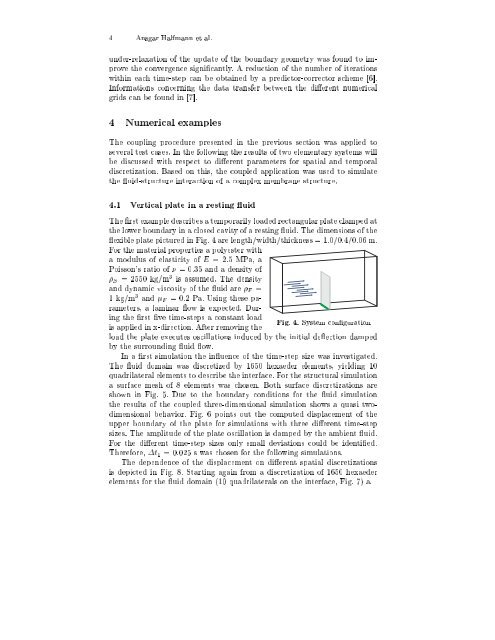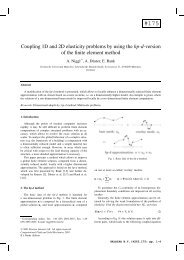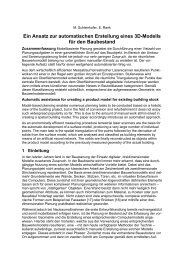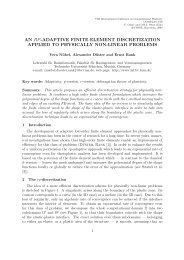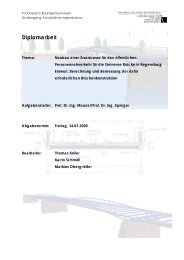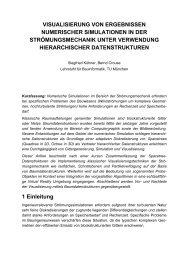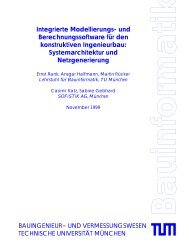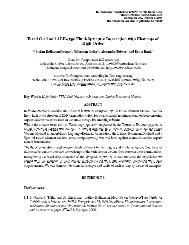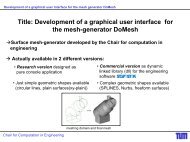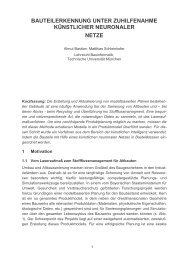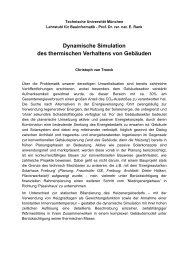Computational engineering for wind-exposed thin-walled structures
Computational engineering for wind-exposed thin-walled structures
Computational engineering for wind-exposed thin-walled structures
You also want an ePaper? Increase the reach of your titles
YUMPU automatically turns print PDFs into web optimized ePapers that Google loves.
4 Ansgar Halfmann et al.<br />
under-relaxation of the update of the boundary geometry was found to improve<br />
the convergence signicantly. A reduction of the number of iterations<br />
wi<strong>thin</strong> each time-step can be obtained by a predictor-corrector scheme [6].<br />
In<strong>for</strong>mations concerning the data transfer between the dierent numerical<br />
grids can be found in [7].<br />
4 Numerical examples<br />
The coupling procedure presented in the previous section was applied to<br />
several test cases. In the following the results of two elementary systems will<br />
be discussed with respect to dierent parameters <strong>for</strong> spatial and temporal<br />
discretization. Based on this, the coupled application was used to simulate<br />
the uid-structure interaction of a complex membrane structure.<br />
4.1 Vertical plate in a resting uid<br />
The rst example describes a temporarily loaded rectangular plate clamped at<br />
the lower boundary in a closed cavity of a resting uid. The dimensions of the<br />
exible plate pictured in Fig. 4 are length/width/thickness = 1.0/0.4/0.06 m.<br />
For the material properties a polyester with<br />
a modulus of elasticity of E = 2.5 MPa, a<br />
Poisson's ratio of =0:35 and a density of<br />
S = 2550 kg/m 3 is assumed. The density<br />
and dynamic viscosity of the uid are F =<br />
1kg/m 3 and F =0:2 Pa. Using these parameters,<br />
a laminar ow is expected. During<br />
the rst ve time-steps a constant load<br />
is applied in x-direction. After removing the<br />
Fig. 4. System conguration<br />
load the plate executes oscillations induced by the initial deection damped<br />
by the surrounding uid ow.<br />
In a rst simulation the inuence of the time-step size was investigated.<br />
The uid domain was discretized by 1650 hexaeder elements, yielding 10<br />
quadrilateral elements to describe the interface. For the structural simulation<br />
a surface mesh of 8 elements was chosen. Both surface discretizations are<br />
shown in Fig. 5. Due to the boundary conditions <strong>for</strong> the uid simulation<br />
the results of the coupled three-dimensional simulation shows a quasi twodimensional<br />
behavior. Fig. 6 points out the computed displacement of the<br />
upper boundary of the plate <strong>for</strong> simulations with three dierent time-step<br />
sizes. The amplitude of the plate oscillation is damped by theambient uid.<br />
For the dierent time-step sizes only small deviations could be identied.<br />
There<strong>for</strong>e, t 1 =0:025 s was chosen <strong>for</strong> the following simulations.<br />
The dependence of the displacement on dierent spatial discretizations<br />
is depicted in Fig. 8. Starting again from a discretization of 1650 hexaeder<br />
elements <strong>for</strong> the uid domain (10 quadrilaterals on the interface, Fig. 7) a


